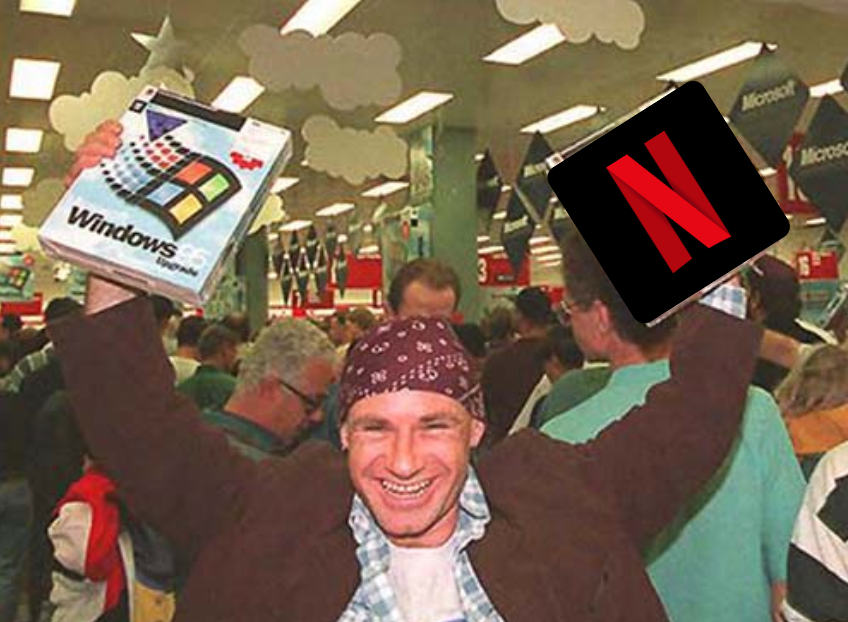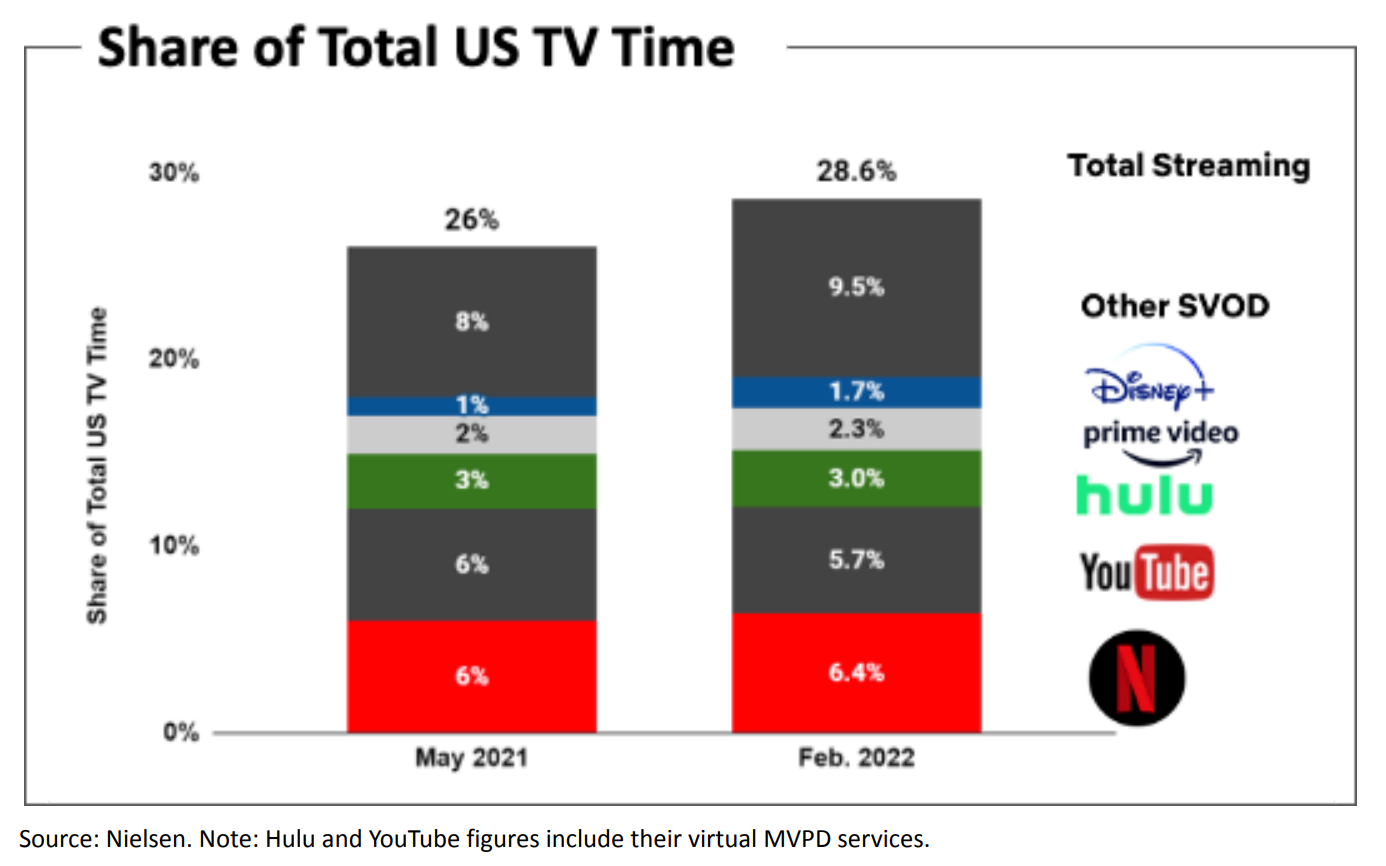
Some great news! In addition to writing Napkin Math, I’ve joined Tidemark as a Director. Tidemark is a rare breed of growth equity firm that is actually building a differentiated product. The people are kind, the deal flow is substantial, and 10% of firm profits are donated to charity. I’m excited about the fund for all these reasons—plus the firm shares my deep belief in hardcore analysis (see their recent work on vertical SaaS). This role is something I’ve wanted to do for a long, long time so it is exciting to be partnering with a team that resonates with my beliefs about how a fund can win. We are currently investing out of a $575M Fund 1 to partner with startups as they hit escape velocity.
Writing essays on what I’m passionate about has completely altered my professional career. I’ll continue to publish here full-time but my role at Tidemark will be a little extra spice on top. If you are scaling in the creator economy or vertical SaaS space, reach out.
And with that, we return to our regularly scheduled programming. Today is a quick take on what Netflix should do next based on their earnings miss from this week.
Perhaps the demise of Netflix was obvious in retrospect. A sampling of recent shows includes:
- A show called “The Ultimatum” where one partner says “marry me or we are done” on national television
- A show called “Love is Blind” where people got engaged before even seeing what the other person looks like
- A show where people go on dates dressed as animals entitled “Sexy Beasts”
To be clear, I watched all of these and loved every minute of it. However, this type of programming does not scream “long-term competitive content advantage.”
Whether or not you blame the light bestiality undertones of their recent programming, Netflix stock is getting crushed after a huge earnings miss. As of writing, the stock had dropped 35% with its worst daily performance since 2004. The company net lost 500K subscribers last quarter versus having previously forecasted a net ad of 2.5M. Guidance for next quarter is forecasting a 2M subscriber loss. This is the first time the company has shrunk in over a decade.
So all in all—not great.
However, I would like to propose a solution to their woes—they should run to Daddy Gates and get bought by Microsoft. To understand why this is the best option available to the company, we first need to establish what has gone wrong.
The Problems:
There are 4 excuses that management gave for why growth has flatlined: macroeconomic woes, availability of screens/broadband, password sharing, and increased competition. Let’s walk through each quickly.
Macro-smacked
The first is what I like to call the Biden special, “It’s Putin’s fault!” The management states that “macro factors, including sluggish economic growth, increasing inflation, geopolitical events such as Russia’s invasion of Ukraine, and some continued disruption from COVID are likely having an impact.” Blaming the macroeconomic conditions for failure is the public company equivalent of calling a mulligan.
Analyst: How would you explain a 2M subscriber miss?
Netflix CEO: Would you give me a gimme if I wildly waved my hands and said “the economy”?
To be fair to Netflix's argument, the company did choose to wind down operations in Russia and lose 700K subscribers (take that Putin! No Stranger Things for you). But the excuse of a weak economy is one utilized by weak companies.
Of course it is easier to have success in consumer entertainment when lots of people have excess cash to spend! That the economy got tight and everyone started churning is concerning. People’s increased price sensitivity and more stringent utility calculations mean that Netflix’s failure (especially relative to the growth of its direct competitors) means the service isn’t as valuable as management thought.
Screen shortage?
The company also said the availability of screens/broadband is being a hindrance to their growth.
“First, it’s increasingly clear that the pace of growth into our underlying addressable market (broadband homes) is partly dependent on factors we don’t directly control, like the uptake of connected TVs (since the majority of our viewing is on TVs), the adoption of on-demand entertainment, and data costs. We believe these factors will keep improving over time, so that all broadband households will be potential Netflix customers.”
This assertion by the team management teams doesn’t feel novel at all. This has been obvious since 2007 when they started streaming! Of course, the limit of screens and internet broadband will limit growth. This feels like another roundabout admission of overestimating TAM.
To me, both of these reasons are kind of weak. But there were two important reasons for their lack of growth that are actually worth honing in on.
What’s your Netflix password?
“Second, in addition to our 222m paying households, we estimate that Netflix is being shared with over 100m additional households, including over 30m in the UCAN region. Account sharing as a percentage of our paying membership hasn’t changed much over the years, but, coupled with the first factor, means it’s harder to grow membership in many markets - an issue that was obscured by our COVID growth. “
I love this excuse because it means all of us utilizing our ex’s Netflix account caused a company to lose ~55B in market cap. When a company starts to worry about nickels, it means that the dollars are in trouble. Password sharing had been happily ignored by the company for many years because it was assumed that eventually lots of those people would convert. Having 31% of total households being freeloaders is a big deal! But this signifies that they are running out of TAM. They didn’t see the TAM restrictions because COVID juiced growth, but the error is obvious now.
Yet Another Streaming Service
“Third, competition for viewing with linear TV as well as YouTube, Amazon, and Hulu has been robust for the last 15 years. However, over the last three years, as traditional entertainment companies realized streaming is the future, many new streaming services have also launched. While our US television viewing share, for example, has been steady to up according to Nielsen, we want to grow that share faster. Higher view share is an indicator of higher satisfaction, which supports higher retention and revenue.”
In 2019, Reed Hastings the Netflix CEO, famously said that, “We compete with (and lose to) Fortnite more than HBO.” That…is no longer true. The company included this chart in its investor letter.
Disney’s capturing .7% market share in less than a year and other services capturing another 1.5% while Netflix only captured .4% raises the specter of a limited total addressable market once again.
While yes, the company competes indirectly with all entertainment solutions, the company is losing to other services that operate with much smaller budgets and only started streaming services in recent years.
Even more concerning, the company’s response was tepid.
Netflix’s Solution:
The company’s fix to subscriber growth was twofold. The first is to crack down on password sharing. The second solution was shocking and unexpected. Reed Hastings said the following during the Q&A session of the call,
“Related to that, Greg [Peters, Netflix’s COO] has done great work on the price spread. And one way to increase the price spread is advertising on low-end plans and to have lower prices with advertising. And those who have followed Netflix know that I’ve been against the complexity of advertising and a big fan of the simplicity of subscription. But as much I’m a fan of that, I’m a bigger fan of consumer choice. And allowing consumers who would like to have a lower price and are advertising-tolerant get what they want makes a lot of sense. So that’s something we’re looking at now. We’re trying to figure out over the next year or two. But think of us as quite open to offering even lower prices with advertising as a consumer choice.”
Advertising is incredibly difficult to build and is a complete departure from the previous narrative of the company. Hulu and other streamers have successfully incorporated an advertising tier into their offerings, so we know the product works, but for this just to be mentioned in an offhand way isn’t compelling.
I’ll save any further analysis of whether the ad business will work until we get more details on how they choose to do it.
However, this still wouldn’t fix the long-term growth and churn issues! Getting more people to sign up likely requires a step-function change in value for the offering. To that I would propose something different.
My Solution:
Embarrassingly, I just published a mostly bullish case for the company back in February with Byrne Hobart from The Diff. The primary thrust of our argument was that because Netflix had the largest subscriber base, their per-user content creation costs were dramatically lower than their peers. However, there was an important disclaimer, the difference between efficiency and efficacy. Apologies for the longer quote from that article, but I promise it is worth it:
“It is tempting when considering the competitive landscape to reduce the comparison to be the efficiency of the creative output. Most of the takes (prominently Ben Thompson over at Stratechery) argue that Netflix will be the winner of the content wars by virtue of lowest cost per subscriber. Netflix may not have the unique IP of Disney or the cash of Apple, but they have the largest subscriber base by which they can spread out their content costs. A $100M dollar show for HBO Max (73.8M subscribers) costs $1.35 per subscriber. Netflix (222M) producing the same video, at the same cost, gives you a cost per subscriber of $.45.
However, almost every streaming service besides Netflix comes at the problem not from a dollar efficiency perspective but more from a bundled products viewpoint. E.g. Disney wants you to watch the new Loki show on Disney+, order merch through their e-commerce store, wear that merch to the new Avengers portion of Disneyland, and then post about it all on social media. As we discussed earlier, Netflix calculating its LTV/CAC ratio is a near-impossible task just by charging a flat fee. Can you imagine the complication that occurs when trying to guess the LTV/CAC for Amazon? While efficiency matters, so do the efficacy of the dollars produced.”
All of Netflix’s streaming peers ultimately rely on building higher LTVs by bundling in adjacent products. Price increases can only get you so far without adding additional product horizons. There is only one company that can offer that lateral expansion capability to Netflix and is also big enough to absorb the company—Microsoft.
When you consider the tech giants, it is important to know that they all play a game of “well here is my version of this.” Tech trends are not terribly hard to predict (most of the value comes on the details/execution side of things) so all of these companies will try their hand at everything. Apple is doing self-driving cars, Amazon does Smart Home devices, Facebook is building VR headsets, etc etc. The question is less about what will be successful but more a question of how big it will get and when it will get here. Since this is much more difficult to predict it is immensely valuable to already have a relationship with consumers so you can pitch your new tech when it is ready.
One way that tech giants have been interested in getting consumer attention is video streaming. Of the tech giants, Microsoft is the only one without a video-on-demand solution. Apple has Apple TV+, Amazon Prime TV, Google has Youtube, and Facebook has native video/Reels. Microsoft has long held an interest in owning the living room. In 2013, with the launch of the Xbox One, the president of Microsoft’s interactive entertainment business said, "Our ambition is to become the all-in-one system for every living room. The place where your games, TV, and entertainment come alive."
Microsoft obviously missed on this one—the Xbox never achieved this lofty goal as it turned out that software/content is where value accumulated for home entertainment—but the ambition has always been there. Netflix offers the opportunity to once again swing for control of the consumer. Rather than being wholly reliant on the success of the Xbox, they can also come at over 200M subscribers and a world-class content arm.
I recognize that was an exceptionally long lead up to my argument for why Microsoft should acquire Netflix, however, in understanding the positions of these two companies you’ll be able to see all the reasons why this acquisition makes so much sense:
1. Jumpstart a world-class ad platform: Let’s hypothesize that Netflix is serious about spinning up an ad network. Give it 6 months to build the tech, another 6 months to build out sales, and then a year to tune it. This would give the company two years before we would likely see any material effects on their earnings. What if instead, they just integrated with Microsoft’s network? The big M already does $10B in search and programmatic ads. The company has signaled further interest in building their own walled garden of ad with the purchase of App Nexus for reportedly ~$1B.
Microsoft is incredibly serious about its ambition to build an ad network. Netflix could enrich that with household-level consumption data and a much deeper interest graph. In turn, Netflix would be able to start offering ad-supported tiers far faster. Microsoft is notoriously good at B2B sales, adding in that Gate’s rolodex and salesforce would be a huge win.
2. Rapidly scale videogame ambitions: Even if somehow Netflix were able to launch an ad tier on their own tomorrow, it still wouldn’t solve their churn issues. To improve the Netflix product, they either have to a dramatic improvement in content being published or offer brand new engagement modalities. Improving content is incredibly tough so they are stuck with adding new ways to play.
Netflix has already publicly stated their ambition to build games into their app, with them just completing their third game studio acquisition last month. (Ironically, I saw games appear for the first time in the app tonight as I was browsing.) However, games are very much a learned muscle that is tough to get right. Microsoft can jumpstart Netflix’s efforts with their own subscription product. The Seattle giant’s primary consumer entertainment offering is the Xbox Game Pass with 25M subscribers. That product is often described as “Netflix for Videogames.” I mean come on, this post just writes itself! By bundling the two offerings, the companies would have a product that no other streamer could match.
If Reed Hastings really does worry more about Fortnite than HBO, then being able to offer Halo and hundreds of other AAA quality games would make a huge difference. Microsoft benefits by having 200M households that they can cross-promo or even bundle with. They’ll also have a leg up on all the other competitors, no one besides Sony could offer anything close.
3. Basically no antitrust concerns: I’m not an antitrust lawyer, but my hunch would be that this deal would be questioned but not challenged in the U.S. courts. Microsoft has no current streaming market share. Consumers would likely end up getting more bang for their buck so it is unlikely that the price would be a complaint the FTC could level. I recognize that advocating for more tech giant consolidation is an unpopular opinion but I think is a case where 1+1=3 and consumers would be the one who would benefit.
4. Azure>AWS: Netflix is one of the most demanding clients in cloud computing today. For many, many years they have been marquee clients of Amazon Web Services. They are in case studies, promos, pitch decks, and customer conferences galore. By acquiring Netflix and forcing them to migrate to Microsoft’s Azure, Microsoft would steal a powerful figurehead right from under Bezos's nose. And hopefully, Netflix would get the friends and family discount from the Azure team so it would be cheaper for them.
I recognize that these reasons are simple and obvious—well, that is because the deal is too! Bundling Gamepass and Netflix is a clear win. Plugging Netflix’s data into Microsoft ad models is another instance of a quick victory.
If Microsoft were to go for it, they will have ~60B in cash on hand after completing their most recent acquisition, so the deal would likely require some equity/debt to finance. But this Microsoft is worth ~2.15T! Even if you bought Netflix at triple its current 100B current valuation, it would only represent a <20% of its market cap. The deal is digestible and makes a ton of sense for both sides. Microsoft moves into consumer streaming, Netflix gets cash, protection, and a jump start on all of its growth ambitions. Its an obvious win for both sides.
Find Out What
Comes Next in Tech.
Start your free trial.
New ideas to help you build the future—in your inbox, every day. Trusted by over 75,000 readers.
SubscribeAlready have an account? Sign in
What's included?
-
Unlimited access to our daily essays by Dan Shipper, Evan Armstrong, and a roster of the best tech writers on the internet
-
Full access to an archive of hundreds of in-depth articles
-
-
Priority access and subscriber-only discounts to courses, events, and more
-
Ad-free experience
-
Access to our Discord community








Comments
Don't have an account? Sign up!
Good post. 👍
But I think you're downplaying the impact of broader geo-political events and macro-trends: "The excuse of a weak economy is one utilized by weak companies."
There are tons of incredibly powerful forces that are outside of a company's control. The belief that CEO has the magical ability to stop the ground from moving underneath them is an enduring Capitalist belief.
Netflix lost 2 million customers, but 35% of that was churn from Russian sanctions. If Reed Hastings had the ability to stop Putin from invading Ukraine, I think he'd be working for State Dept!
Naturally, how Reed and his team respond to these challenges matters. Personally, I think a lower-priced tier with ads could work. It *would* help churn if instead of losing a customer, they get to keep them (albeit at a lower price). It could also encourage more price-sensitive customers to sign up. This model has worked for Spotify, Hulu, YouTube.